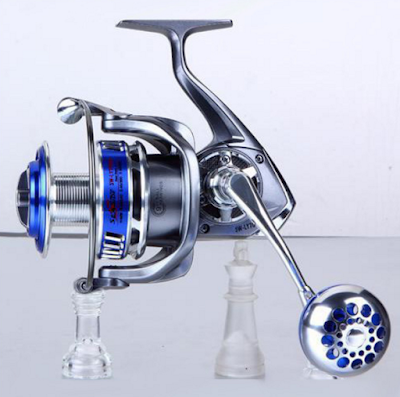There are many potential problems can be happened to the fishing reels, and it is impossible to send them to the repair shop every time. So, if you love fishing very much, you’d better learn how to solve these problems by yourself.
As Chinese strategist Sun Tzu said:” Know yourself and know your enemy, you’ll win every war.” This sentence can be used in repairing fishing reel. Only when you know how it works, then you can know how to fix it.
How Does Fishing Reels Work?
Fishing line passes through a rotor that spins around a stationary spool, wrapping the line as it goes. To lay line evenly, the spool is mounted on a shaft that moves up and down as the spool spins. The angler lifts the bail wire mounted on the rotor and holds the line in place with his index finger to make a cast. After casting, the bail wire is closed with the line under it, and the rotor can lay line on the spool again.
What Can Go Wrong with a Fishing Reel and how to Fix It?
1. Line twist
Line twist is the most common problem in fishing, most fishermen must have met it before. It can be caused by several reasons such as long-term general use. If you have line twist, the best way is to strip off the old line and apply new with a professional machine for a tight and uniform wind.
2. The size of line
The fishing line can be divided into several types by the size. And when you choose the fishing line, please remember that the size of the line should match to the fishing reels. Many problems are just caused by the wrong size fishing line. If you don’t know how to select the line, you can tell the sellers your reel’s model or bring you reel to the shop.
3. Bail spring
Many fishermen complain about that the reel bail doesn’t spring back when fishing, and when the return spring fails to flip the bail back open, the bail springs are likely damaged.
Bail springs are simple and inexpensive to replace. If you have an older model reel, replacement parts can be difficult to find, but usually a reel repair expert can recommend a good substitute.
4. Braided Line slippage
Nowadays, more and more fishermen prefer to use the braided line because of its high knot strength, lack of stretch, and great overall power in relation to its diameter. But new users may not know that the slick line does not adhere easily to the spool. Braided line requires some anchoring for the highest performance.
In order to avoid this problem, you can apply a backing directly onto the reel to serve as a grip for braided line. You can use a few wraps of monofilament line on the base of the spool before you wrap the braided line, or use electrical tape. Both options provide easy backing to prevent line slippage

没有评论:
发表评论